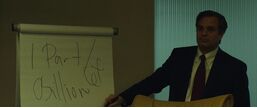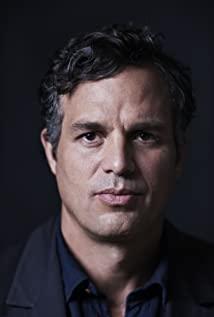It is said that an American boy was born with facial defects: one of his eyelids was serrated, his retina was separated from his iris, and he had only half of his nose and one nostril. The boy named Bucky took almost 30 years to survive. After many operations, he suffered "thousands of cuts" at a young age, but his face was still terrible. There is another thing that sounds like it has nothing to do with the boy: a farmer in the United States found that more than 200 cows kept dying, and in the end, only 40 remained. Paradoxically, the death of the cow is extremely horrific: bony, with a bulging back, blue eyes and black teeth. Relevant parties launched an investigation into it, but unexpectedly, this investigation turned out to be 20 years old, and there was no result. Are the two cases related? have! The relevance behind it is enough to make you take a breath. The story to be told today begins with a major chemical case that shocked the world more than 20 years ago... In 1998, American lawyer Bilot was entrusted by his old friend to investigate an inexplicable "cattle death" incident. Video taken by farmer Wilbert Nong led the environmental lawyer to take on the case: a red cow, bony and arched, standing in a haystack; another black cow died with blue eyes. Through investigation, Bilot found that the farmer had 600 acres of land, and sold 66 acres of it to a company in the 1980s to build a landfill, but since the landfill was built, His cattle began to die one after another, so Tenon suspected that the company was behind it. Bilot asked him which company he sold the land to. After hearing the answer, Bilot was taken aback - "It's DuPont." The strong list is famous, especially because it has an unclear relationship with the U.S. government, so it has great power in the United States and no one dares to provoke it. Lawyer Bilot took up the lawsuit with trepidation—"The villagers can only rely on me, so I can't go." Under the exclusion of all walks of life, Bilot insisted on looking for clues alone. By the summer of 1999, Bilot was suing DuPont in federal court for the Southern District of West Virginia. He personally investigated the chemicals used by DuPont and was sure to get to the bottom of it. However, after in-depth investigation, he was presented with an even more appalling scene-more than 70,000 residents near the garbage treatment plant, more than 3,500 people have suffered from cancer. Not only that, 5 of the 7 pregnant women who worked at the DuPont garbage disposal site gave birth to deformed children. A few days later, he found a substance called "PFOA" in a letter sent by DuPont to the EPA. He was puzzled that he searched all the chemical substances on the record, but there was no clue of PFOA. This substance seems to have been kept secret by DuPont, and it has an unspeakable secret. (PFOA, whose full name is ammonium perfluorooctanoate, was invented in the United States in the 1930s. When Blott saw that letter, This substance has been on the market for more than half a century. Among the various solid materials known to mankind, it has the lowest coefficient of friction, so the most familiar one in ordinary people's life is the non-stick coating produced with it. ) Just when it was about to run out of steam, it was America's judicial system that came into play. The court rules - the defendant must unconditionally produce the information requested by the plaintiff. It was this provision that allowed the investigation to continue. Bilott asked DuPont to provide all the information on PFOA, and DuPont could only obey the law and give the information. But instead of giving concise information, they deliberately shuffled up to 110,000 sheets of paper, stuffed them into dozens of boxes, and threw them at Bilot. These 110,000 documents contain all internal communications, medical reports, and various confidential scientific research reports related to PFOA from DuPont since the 1950s. After spending 4 months, Bilot finally finished reading the material. The long-awaited truth has finally emerged - PFOA is a highly toxic chemical, and DuPont has known its dangers from the beginning, but has kept its toxicity secret for the sake of the company. Bilot found in the data that as early as 1951, DuPont knew that PFOA was a dangerous chemical, but because the government did not list it as a dangerous chemical, they took the risk and developed a kind of chemical using PFOA. A non-stick coating called "Teflon". This coating has excellent properties and immediately became the best-selling non-stick coating in the world upon launch, and is widely loved by consumers around the world. However, in fact, as long as this coating is heated above 300 degrees Celsius, it will release PFOA, which is extremely harmful to the human body. In addition, in order to increase profits, DuPont also arbitrarily added highly toxic PFOA to items such as detergents, outdoor sweatshirts and sports shoes that people cannot live without in daily life. The data also show that DuPont knew as early as the 1960s that PFOA would make the livers of animals such as mice and rabbits larger. Its fatal problem is that non-stick pans must be used at temperatures below 260 degrees Celsius. If your scope of use has been under this standard, then congratulations, you are not among the poisoned. The real hidden danger comes from PFOA, a processing aid for synthesizing Teflon coating! That is, the substance called C8, which is a toxic, harmful and carcinogenic substance! It has been found so far that this substance can cause: kidney cancer, testicular cancer, ulcerative colitis, high cholesterol, thyroid, preeclampsia! In the 1970s, they already knew that their workers had high levels of PFOA in their blood, but they chose to cover up the truth. All the evil truth about DuPont has been announced to the world. In August 2000, DuPont was forced to compensate the Tenon family for $1 million due to overwhelming public opinion. However, this is the end, can it be solved by compensating the Tenon family? Those villagers suffering from cancer, those children who were born teratogenic and delayed for a lifetime, and all the citizens who were polluted, just wanted to settle the matter with one million dollars? Bilot couldn't help but launch a second onslaught on DuPont. In 2001, Bilott wrote a 972-page complaint letter documenting 136 crimes committed by DuPont and sent it to the EPA and all relevant U.S. agencies. But the letter was just sent out when it faced strong resistance again—the EPA argued that they could only test for chemicals that were already regulated, and that PFOA wasn’t, so there was nothing they could do. At such a desperate moment, it is the American judicial system that has made a contribution. West Virginia passed a law specifically for this case—plaintiffs only need to prove they were forced into a toxic environment to win. The defendant must pay for the medical examination for the plaintiff! If the plaintiff falls ill again as a result, he can continue to seek compensation indefinitely. Under the strong legal constraints, DuPont, who has done many evils, was defeated again. In September 2004, DuPont agreed to fund the installation of filtration devices in the contaminated areas and to pay $70 million in compensation for poisoned DuPont employees. Bilot must also prove that the villagers' illness is directly related to PFOA, otherwise the villagers will not be able to get compensation. To this end, Bilot suggested that the victimized 70,000 villagers go to the hospital for a medical examination, so that each medical report can be used as evidence in court. In the next seven years, villagers kept calling Bilot, saying that another person in the village was diagnosed with cancer, and another person died of cancer. Even Tenon, the farmer who turned to Bilot for help at the beginning, died of a heart attack during the seven-year wait. Finally, it is the US The legal system worked. In December 2011, the judge summoned the doctors involved to the court and asked them to tell the truth in court - PFOA and human kidney cancer, testicular cancer, thyroid disease, high cholesterol, pregnancy toxemia, ulcerative colitis associated with other diseases. This time, DuPont was completely speechless. "Seven years later, I finally fulfilled my promise to the residents." As of October 2015, a total of 3,535 victims had filed a lawsuit against DuPont. By February 2017, DuPont announced that it had spun off a new company responsible for the chemicals business, Chemours, to compensate 3,535 victims of $1.6 million each, plus follow-up additional payments, totaling $9. $200 million. Affected by this century-old case, the US government has cut 95% of PFOA usage in the country in 2010. And in 2015, PFOA was completely banned. At present, no products containing PFOA can be found in the United States. European countries have also issued bans on PFOA. In February 2017, the European Commission issued a notification on technical trade measures, which completely banned the production and marketing of PFOA and its salts. Canada also stopped production of PFOA and its salt chemicals in 2008. The key to the success of the Bilot case is the strict and complete judicial system in the United States. At present, there are as many as 15 laws related to hazardous chemicals in the United States, and there are also many regulatory authorities directly related to hazardous chemicals. On the other hand, in China, the prevention and control of chemical pollution has not received enough attention. There is no law in my country on the prevention and control of environmental risks of chemicals, and there is no department dedicated to the supervision of chemicals. Chemical environmental risk management is unreliable and illegal. Non-stick pans are sold well in my country and have a bright market prospect. Some authoritative experts have already reminded them. For example, Shi Yuan, a professor at the Department of Nutrition and Food Hygiene of the Third Military Medical University, has publicly stated that the main ingredient of Teflon is perfluorooctanoic acid in the non-stick pan coating. The latest animal experiments have proved that perfluorooctanoic acid is harmful to animals. Harmful: After eating food containing perfluorooctanoic acid, the growth and development of mice are obviously slow, and their nervous system, immune system and reproductive system are also damaged to varying degrees. Some tumors and premature death occurred. Shi Yuangang said that fluorine-containing polymer compounds can produce a small amount of pyrolysis products at 260 °C, a considerable amount of thermal products can be produced above 400 °C, and the octafluoroisobutene produced at 450-480 °C can reach a lethal concentration. When frying or stir-frying, the temperature in the pot is likely to exceed 260°C. Besides, from the papers of environmental protection professionals in my country, it is found that there is widespread PFOA pollution in the Three Gorges region in Northeast China and the Yangtze River in Wuhan region. However, such environmental incidents cannot be traced back in my country. my country is the world's largest producer of chemicals, and its output value has accounted for 1/4 of the world's total. The legal requirements for chemical regulation are far lower than in other countries. For example, "perfluorooctane sulfonic acid and its salt compounds", which are restricted by the POPs Convention, have already been completely stopped in foreign countries, but they are in full swing in my country. It is widely used in domestic electroplating, fire protection, pesticides and other fields that have long been banned abroad. It can be said that my country has become an "adventurer and an "adventurer" in chemical production and use. OSHA) Hazardous Substances Packaging Hazard Prevention Act (PPA) and even the Federal Insecticide, Fungicide, and Rodenticide Act (FIFRA) and other regulatory agencies directly related to hazardous chemicals are also dotted - US Chemical Safety and Hazard Investigation Board ( CSB) Responsible for the investigation of chemical accidents and hazards in the design of stationary industrial facilities Center for Chemical Process Safety (CCPS) Center of expertise responsible for the study of chemical process safety National Institute of Occupational Safety and Health (NIOSH) Responsible for occupational safety and health matters at work Occupational safety and health The Review Committee (OSHRC) is responsible for judging the conflicts with employers in the process of compulsory safety and health inspection. The "Hazardous Substances Emergency Monitoring System" hosted by the "National Center for Environmental Toxicology" in the United States has detailed information on the trends of domestic hazardous chemicals. It was clear how many mercury thermometers were broken in all the middle school labs in nine states. However! China has become a paradise for "adventurers and speculators" in chemical production and use. In contrast, domestic chemical pollution prevention and control has not received enough attention. In terms of chemical environmental risk prevention and control, China has not yet There is no law. Without a special department to supervise chemicals, the environmental risk management of chemicals cannot be followed, and the violation of the law is difficult to be investigated. PFOA pollution is widespread in the Yangtze River in Northeast China, the Three Gorges region and Wuhan region. However, such Environmental incidents cannot be traced back in China. China is a major producer of chemicals in the world, and its output value has accounted for 1/4 of the world's total. However, the legal requirements for chemical supervision are far lower than those of other countries. "Fluoroctane sulfonic acid and its salt compounds" have long been discontinued abroad, but they are in full swing in China, and are widely used in domestic electroplating, fire protection, pesticides and other fields that have long been banned abroad. It can be said that China has become a chemical industry. It is a “paradise for adventurers and speculators” for the production and use of chemical products. The environmental protection threshold is low, and the chemical management standards, monitoring and enforcement capabilities are very lacking. Come 7 deadly "unclear" —— The basic information and risk base of chemical environmental management are unclear. The type, quantity, industry, and geographical distribution of chemical production and use are unclear. The type, quantity, scale and distribution of major risk sources are unclear. The environment for most chemical substances The hazard is not clear The quantity and pollution of toxic and harmful chemicals are not clear. The status of the transfer of chemical substances is not clear. The distribution of affected biological species and people is not clear. These are only the beginning of a series of disasters. After the 8.12 explosion in Tianjin, the relevant departments were not clear about the types of hazardous chemicals and the storage methods, and dozens of firefighters died at the explosion site. Some time ago, a super chemical pollution seepage pit was discovered in North China, covering an area of more than 170,000 square meters, and seeping into the drinking water of hundreds of thousands of residents nearby. The serious harm to the health of the residents is very similar to the DuPont story, but the same story has a completely different ending. Due to the lack of a hero like Bilot, this incident was not followed up, and it became another domestic chemical pollution case that was never resolved. In addition, there are also "cancer villages" and "deformed towns". There are still no solutions to the serious social problems caused by chemical pollution. Therefore, through today's story, we can see that the United States still has a lot to learn in terms of judiciary, laws and regulations. It is hoped that in the near future, our country will also be able to bring down the talents of the country, carry out the work of peace, establish good laws in the world, eradicate black-hearted chemical enterprises, so that the Chinese people can also stay away from PFOA, stay away from dangerous chemicals, and live a safe and healthy life. Life. One more reminder, one less victim! In the following, it has become another domestic chemical pollution case that has not been resolved. In addition, there are also "cancer villages" and "deformed towns". There are still no solutions to the serious social problems caused by chemical pollution. Therefore, through today's story, we can see that the United States still has a lot to learn in terms of judiciary, laws and regulations. It is hoped that in the near future, our country will also be able to bring down the talents of the country, carry out the work of peace, establish good laws in the world, eradicate black-hearted chemical enterprises, so that the Chinese people can also stay away from PFOA, stay away from dangerous chemicals, and live a safe and healthy life. Life. One more reminder, one less victim! In the following, it has become another domestic chemical pollution case that has not been resolved. In addition, there are also "cancer villages" and "deformed towns". There are still no solutions to the serious social problems caused by chemical pollution. Therefore, through today's story, we can see that the United States still has a lot to learn in terms of judiciary, laws and regulations. It is hoped that in the near future, our country will also be able to bring down the talents of the country, carry out the work of peace, establish good laws in the world, eradicate black-hearted chemical enterprises, so that the Chinese people can also stay away from PFOA, stay away from dangerous chemicals, and live a safe and healthy life. Life. One more reminder, one less victim!
View more about Dark Waters reviews











